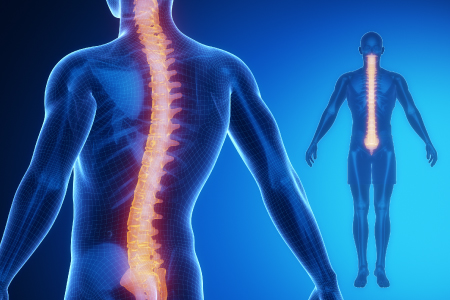Spinal cord stimulators (SCS) are generating a lot of buzz in the world of pain management. With new technology entering the market, and a serious push behind finding alternatives to dangerous opioids and expensive traditional back surgeries, new issues surrounding the use of SCS are cropping up daily. In the midst of all this change, coders and other healthcare professionals who deal with reimbursement may be wondering, “What are the appropriate CPT codes to report for SCS?”
Technology
In September, Medtronic announced that the FDA had approved its implantable SCS that features real-time data tracking and improved battery performance. Neurosurgeons are implanting the devices as an alternative to spinal decompression, a procedure involving removal of parts of the spine, and spinal fusion, in which rods and screws are used to restructure the spine, according to a recent news report about the first surgery involving the Medtronic device.
The market for SCS in the United States is only going to improve, according to a recent industry report. “The U.S. has great potential in the years ahead with favorable reimbursement policies and improved health service quality,” according to the report, which also points out that the “high cost of treatment, tough regulatory problems and dependency on traditional therapies are some of the factors posing challenge for the market growth.”
Confusion for Coders
Coding for pain management is never a walk in the park, given the close scrutiny that treatment for chronic pain is subjected to – by both the government and insurers. Providers’ documentation must clearly indicate the procedures performed and the medical necessity for those services.
The basic CPT codes used for SCS, according to Boston Scientific, are:
- 63650: Percutaneous implantation of neurostimulator electrode array, epidural
- 63655: Laminectomy for implantation of neurostimulator electrodes, plate/paddle, epidural
- 63661: Removal of spinal neurostimulator electrode percutaneous array(s), including fluoroscopy, when performed
- 63662: Removal of spinal neurostimulator electrode plate/paddle(s) placed via laminotomy or laminectomy, including fluoroscopy, when performed
- 63663: Revision including replacement, when performed, of spinal neurostimulator electrode percutaneous array(s), including fluoroscopy, when performed
- 63664: Revision including replacement, when performed, of spinal neurostimulator electrode plate/paddle(s) placed via laminotomy or laminectomy, including fluoroscopy, when performed
- 63685: Insertion or replacement of spinal neurostimulator pulse generator or receiver, direct or indirect coupling
- 63688: Revision or removal of implanted spinal neurostimulator pulse generator or receiver
‘Trial’ and Error
SCS therapy must be based on a trial and careful screening and diagnosis by a multidisciplinary team that includes both psychological and physical exams, according to Medicare Administrative Contractor (MAC) Noridian, which offers an active local coverage determination (LCD) relating to SCS for chronic pain.
Permanent implantation can offer serious reimbursement issues. “Physicians with a low trial to permanent implant ratio (less than 50%) will be subject to post-payment review and may be asked to submit documentation as to the patient selection criteria, the radiologic imaging demonstrating proper lead placement, and the medical necessity of the trials,” according to the Noridian LCD. “Failure to provide this documentation will be cause for post-payment denial and recoupment of reimbursement.”
Coding Battery Replacement
While improved battery performance is a welcome development, all batteries eventually die. So battery replacement is an issue for coders, as surgery is required to replace dead batteries.
Nine years is the expected lifetime of Medtronic’s rechargeable SCS, according to the company. Especially when SCS revision and replacement for pulse generators and leads are concerned, there is a fair amount of confusion out there when it comes to correct coding in this particular corner of pain management and treatment.
In fact, battery replacement was the topic of a Noridian LCD last year. Noridian clarifies again in its active LCD, “In situations where the spinal cord stimulator has been working well but is in need of replacement for battery change, malfunction or end of stimulator life, a new trial is not needed to replace the stimulator.”




